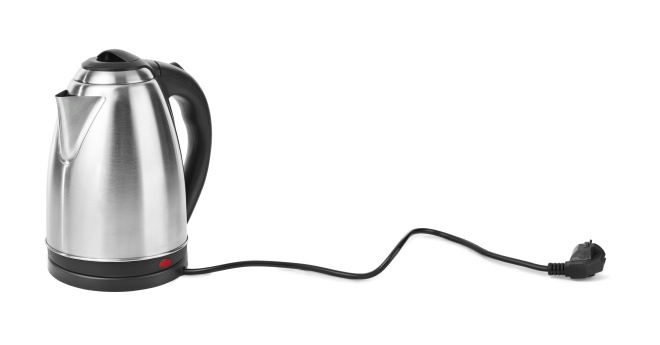
It happens to all of them eventually: you notice that icky weird build up of gunk on the inside of your tea kettle. Rinsing the inside doesn’t seem to do much in the way of removing that build up and soapy water does nothing either. It’s enough to make you want to chuck it and buy a new one. But hold off doing that, because cleaning the kettle is actually surprisingly easy!
Before we get to that, I’m sure you want to know what that stuff actually is and where it comes from:
First, know that it’s nothing harmful. Ordinary tap water, especially if its hard water contains high levels of minerals like calcium and magnesium. Over time build-up of these minerals (called limescale) creates white powdery deposits inside your kettle. And it’s not easy to remove. Some kettles actually get black deposits instead of white powdery ones on the inside. This comes from calcium deposits being heated in an empty kettle and leaving behind traces that carbonizes. Again, not dangerous but certainly unsightly.
Second, there are a few ways to remove the mineral deposits and descale your kettle whether its electric or the traditional stove top kind:
1. Vinegar and water: Boil equal parts white vinegar and water. Turn off the heat, and let the kettle sit for a few hours. Rinse and repeat as needed until the interior is clean.
2. Lemon juice: I’ve used this method a few times and it’s worked like a charm. Fill the kettle halfway and pour in pure lemon juice – roughly 2 cups – and bring to a boil. Repeat a few times if necessary and then rise inside of pot a few times to remove any lemon residue.
3. Citrus Acid powder: I like the one from Zojirushi that they make to clean their hot water heaters. You just pour in a packet of the dried citric acid into water and boil a few times until the minerals release. You’ll often see them floating around depending on how scale-y your pot has become. Once you see that it’s worked, rinse the inside of the pot a few times to remove any of the powder or your water/tea will taste lemony. Here is a link should you want to buy the packets rather then use what you have at home.
It’s important to keep your tea kettle sparkling clean so that the water being boiled doesn’t adversely affect the taste of your tea. Just simply check the inside of your kettle weekly to see if it needs descaling. If you notice build-up, you can now chose one of the methods above to clean it out. Plus, by regularly maintaining your tea tools, it extends the life of your gadget which ultimately keeps it out of a landfill. All good things… For the earth and for making good tea.
Happy Sipping!
~The Chief Leaf

You must be logged in to post a comment.